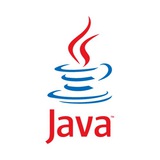tg-me.com/topJavaQuizQuestions/426
Last Update:
Creating a Simple HTTP Server with Java
Hey everyone! 👋 Today, I want to share a quick guide on how to create a simple HTTP server in Java using the ServerSocket class. This is a great way to understand the fundamentals of networking in Java.
Here’s a brief overview of how it works:
1. Setup a ServerSocket: This will allow your server to listen for incoming connections.
2. Accept Client Connections: The server waits and accepts client requests.
3. Handle Requests: Read the input from the client, generate a response, and send it back.
Here's a basic code snippet to get you started:
import java.io.*;
import java.net.*;
public class SimpleHttpServer {
public static void main(String[] args) throws IOException {
ServerSocket serverSocket = new ServerSocket(8080);
while (true) {
Socket clientSocket = serverSocket.accept();
handleRequest(clientSocket);
}
}
private static void handleRequest(Socket clientSocket) throws IOException {
BufferedReader in = new BufferedReader(new InputStreamReader(clientSocket.getInputStream()));
PrintWriter out = new PrintWriter(clientSocket.getOutputStream(), true);
String requestLine = in.readLine();
// Just for demo purposes, send back a simple HTTP response
out.println("HTTP/1.1 200 OK");
out.println("Content-Type: text/plain");
out.println();
out.println("Hello, World!");
clientSocket.close();
}
}
Key Points to Remember:
- The server listens on port 8080.
- You can customize the response based on the request.
Give it a try and let me know how it goes! Happy coding! 🚀
BY Top Java Quiz Questions ☕️
Warning: Undefined variable $i in /var/www/tg-me/post.php on line 283
Share with your friend now:
tg-me.com/topJavaQuizQuestions/426
